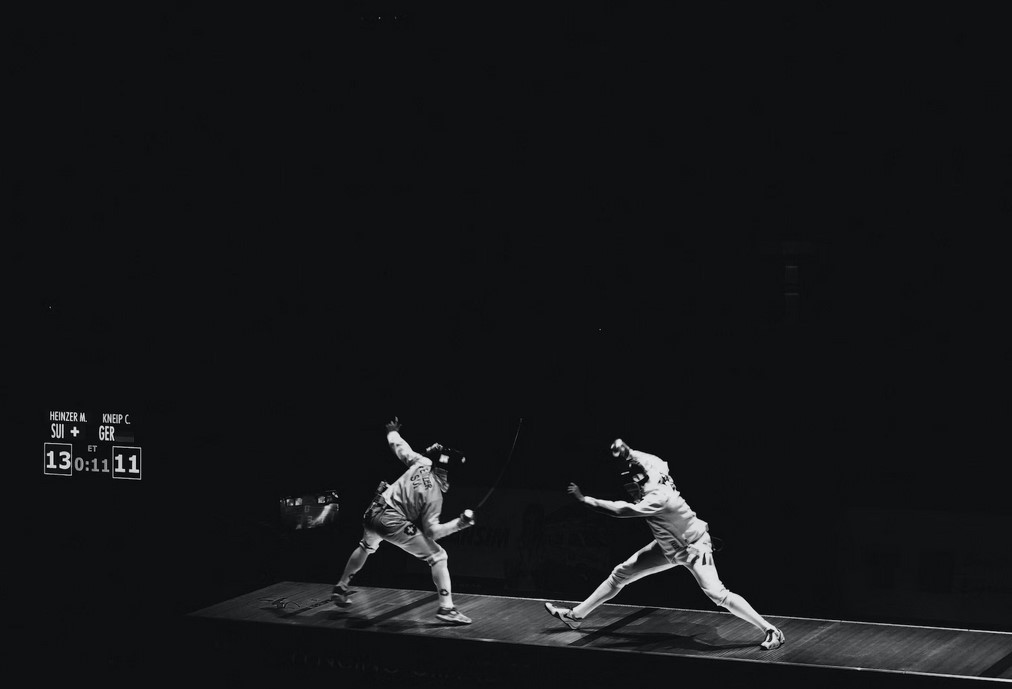Fencing is a sport that combines agility, strategy, and precision. Among its various techniques, counterattacking stands out as a crucial skill that can turn the tide of a bout. By effectively countering an opponent’s attack, fencers can seize control of the match and gain a decisive advantage. In this article, we will delve into the intricacies of counterattacks in fencing, exploring the techniques, tactics, and importance of mastering this skill.
Understanding Counterattacks: A Tactical Approach
Counterattacks in fencing involve responding to an opponent’s attack with a swift and calculated offensive maneuver. This technique requires precise timing, exceptional reflexes, and a thorough understanding of your opponent’s intentions. By capitalizing on the opponent’s commitment to an attack, fencers can exploit openings and create scoring opportunities.
To execute a successful counterattack, fencers must develop the ability to read their opponent’s movements and anticipate their actions. This involves observing their body language, footwork, and blade positioning to identify vulnerabilities. By remaining vigilant and focused, fencers can react swiftly and effectively.
A counterattack can take various forms depending on the situation. One common technique is the direct counterattack, where the fencer responds to the opponent’s attack by launching an immediate attack of their own. This technique requires exceptional speed and accuracy to catch the opponent off guard and score a point.
Alternatively, fencers can employ a delayed counterattack, also known as a “stop-hit.” This technique involves evading the opponent’s initial attack and then launching a well-timed attack during their recovery phase. Timing and precision are crucial in executing a successful stop-hit, as it relies on exploiting the moment of vulnerability when the opponent is off balance or unable to defend.
Techniques for Mastering Counterattacks
To become proficient in counterattacking, fencers must develop a repertoire of techniques and hone their skills through deliberate practice. Here are some essential techniques to consider.
Footwork and Distance Control
Footwork plays a crucial role in executing successful counterattacks. Fencers must maintain an optimal distance from their opponent to effectively launch their attacks while remaining outside the opponent’s reach. By mastering footwork techniques such as advances, retreats, and lunges, fencers can swiftly maneuver and create opportunities for counterattacks.
Blade Work and Point Control
Precise blade work is essential for executing accurate counterattacks. Fencers must develop the ability to manipulate their blades swiftly and precisely to parry the opponent’s attack while simultaneously launching their own offensive action. Point control, a skill developed through rigorous training, enables fencers to strike their opponent’s target area with accuracy and finesse.
Timing and Anticipation
Timing is crucial in counterattacking. Fencers must develop a keen sense of timing to launch their attacks at the precise moment when the opponent’s vulnerability is at its peak. Anticipating the opponent’s actions through careful observation and analysis allows fencers to react swiftly and execute well-timed counterattacks.
Feints and Deceptive Actions
Feints and deceptive actions are effective tools in creating opportunities for counterattacks. By misleading their opponents through subtle feints, changes in tempo, or unexpected variations in movements, fencers can provoke a premature attack and swiftly respond with a well-timed counterattack.
Tactical Considerations and Strategies
Counterattacks are not just about individual techniques. They are also influenced by tactical considerations and strategies. Fencers must adapt their approach based on the opponent’s style, strengths, and weaknesses. Here are some key factors to consider when formulating counterattacking strategies.
- Analyzing the Opponent. Understanding your opponent’s fencing style, preferred attacks, and patterns of movement is crucial in developing effective counterattacking strategies. By studying their previous bouts and observing their behavior during a match, fencers can identify patterns and vulnerabilities to exploit.
- Assessing Timing and Distance. Timing and distance play a vital role in executing successful counterattacks. Fencers must gauge the right moment to launch their attacks based on the opponent’s actions and adjust their distance to create optimal scoring opportunities. Accurate assessment of these factors is essential for effective counterattacking.
Challenges and Pitfalls of Counterattacking
- Over-reliance. While counterattacks can be effective, relying on them too heavily can make a fencer predictable.
- Risk of Double Hits. In some fencing disciplines, if both fencers land a hit simultaneously, both get a point. Overusing counterattacks can lead to many double hits.
- Miscalculating Distance. Misjudging the distance can result in the fencer being hit by the opponent’s attack or their counterattack missing the mark.
Table: Common Challenges in Counterattacking
| Challenge | Potential Outcome |
|---|---|
| Over-reliance | Becoming predictable |
| Risk of Double Hits | Both fencers scoring points |
| Miscalculating Distance | Missing the mark or getting hit |
While counterattacking offers many benefits, it’s essential to be aware of its potential pitfalls. Fencers need to use this technique judiciously, balancing it with other strategies to remain unpredictable and effective.
So, in the dance of blades that is fencing, the counterattack stands out as a move of both grace and strategy. When executed with precision and skill, it can be the key to victory. But like all techniques, it requires understanding, practice, and a keen sense of timing. A well-rounded fencer knows when to deploy a counterattack and when to hold back, making them not just a skilled athlete but a master tactician.
